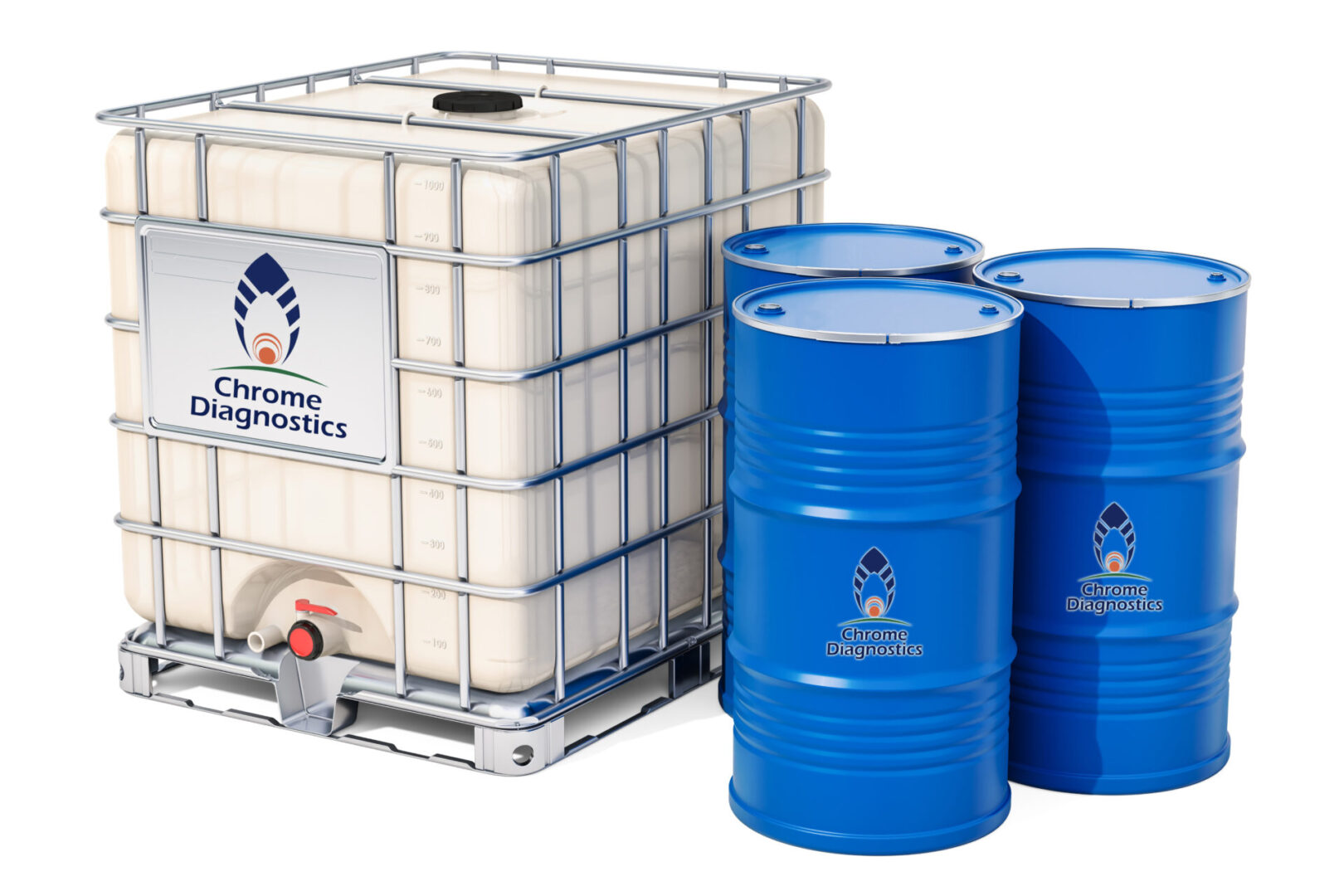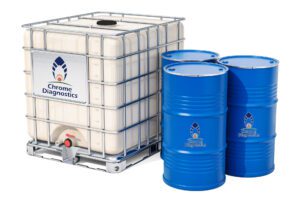Description
2 Drum MOQ on all 55 gal packing sizes – call for FTL discounts
SECTION 1: IDENTIFICATION OF THE SUBSTANCE/MIXTURE AND OF THE COMPANY
1.1. Product Identifier
Product Name: MCT Oil
CAS No: 65381-09-1; 73398-61-5
Synonyms: Caprylic/Capric Triglyceride; Medium Chain Triglycerides
1.2. Intended Use of the Product
Use of the substance/mixture: Various Applications
1.3. Name, Address, and Telephone of the Responsible Party
Company
GreenChem Industries
222 Clematis St. Suite 207
West Palm Beach, FL 33401
T 561-659-2236 F 561-659-2237
www.greenchemindustries.com
1.4. Emergency Telephone Number
Emergency Number : 800-424-9300
For Chemical Emergency, Spill, Leak, Fire, Exposure, or Accident, call CHEMTREC – Day or Night
SECTION 2: HAZARDS IDENTIFICATION
2.1. Classification of the Substance or Mixture
GHS-US classification
Aquatic Acute 3 H402
Full text of hazard classes and H-statements : see section 16
2.2. Label Elements
GHS-US Labeling
Hazard Statements (GHS-US) : H402 – Harmful to aquatic life
Precautionary Statements (GHS-US) : P273 – Avoid release to the environment.
P501 – Dispose of contents/container in accordance with local, regional, national,
and international regulations.
2.3. Other Hazards
Other Hazards Not Contributing to the Classification: Exposure may aggravate pre-existing eye, skin, or respiratory
conditions.
2.4. Unknown Acute Toxicity (GHS-US)
No data available
SECTION 3: COMPOSITION/INFORMATION ON INGREDIENTS
3.1. Substance
Name
CAS No
MCT Oil
65381-09-1
Name Product Identifier % GHS-US classification
Decanoic acid, ester with 1,2,3-
propanetriol octanoate
(CAS No) 65381-09-1 100 Aquatic Acute 3, H402
3.2. Mixture
Not applicable
Full text of H-phrases: see section 16
MCT Oil
Safety Data Sheet
6/22/19 EN (English US) 2/5
SECTION 4: FIRST AID MEASURES
4.1. Description of First Aid Measures
First-aid Measures General: Never give anything by mouth to an unconscious person. If you feel unwell, seek medical advice
(show the label where possible).
First-aid Measures After Inhalation: When symptoms occur: go into open air and ventilate suspected area.
First-aid Measures After Skin Contact: Remove contaminated clothing. Drench affected area with water for at least 15
minutes.
First-aid Measures After Eye Contact: Rinse cautiously with water for several minutes. Remove contact lenses, if present and
easy to do. Continue rinsing.
First-aid Measures After Ingestion: Rinse mouth. Do not induce vomiting.
4.2. Most Important Symptoms and Effects, Both Acute and Delayed
Symptoms/Injuries: None expected under normal conditions of use.
Symptoms/Injuries After Inhalation: Not expected to present a significant inhalation hazard under anticipated conditions of
normal use.
Symptoms/Injuries After Skin Contact: Contact during a long period may cause slight irritation.
Symptoms/Injuries After Eye Contact: May cause minor eye irritation.
Symptoms/Injuries After Ingestion: May cause nausea, vomiting, and diarrhea.
Chronic Symptoms: None known.
4.3. Indication of Any Immediate Medical Attention and Special Treatment Needed
If medical advice is needed, have product container or label at hand.
SECTION 5: FIREFIGHTING MEASURES
5.1. Extinguishing Media
Suitable Extinguishing Media: Use extinguishing media appropriate for surrounding fire. Dry chemical, carbon dioxide, water
spray, fog. For large fire : Water spray.
Unsuitable Extinguishing Media: Do not use water jet. Use of heavy stream of water may spread fire.
5.2. Special Hazards Arising From the Substance or Mixture
Fire Hazard: Not considered flammable but may burn at high temperatures.
Explosion Hazard: Product is not explosive.
Reactivity: Hazardous reactions will not occur under normal conditions.
5.3. Advice for Firefighters
Precautionary Measures Fire: Exercise caution when fighting any chemical fire.
Firefighting Instructions: Exercise caution when fighting any chemical fire. Use water spray or fog for cooling exposed
containers.
Protection During Firefighting: Do not enter fire area without proper protective equipment, including respiratory protection.
Other Information: Do not allow run-off from fire fighting to enter drains or water courses.
SECTION 6: ACCIDENTAL RELEASE MEASURES
6.1. Personal Precautions, Protective Equipment and Emergency Procedures
General Measures: Handle in accordance with good industrial hygiene and safety practice.
6.1.1. For Non-emergency Personnel
Protective Equipment: Use appropriate personal protection equipment (PPE).
Emergency Procedures: Evacuate unnecessary personnel.
6.1.2. For Emergency Responders
Protective Equipment: Equip cleanup crew with proper protection.
Emergency Procedures: Ventilate area. Upon arrival at the scene, a first responder is expected to recognize the presence of
dangerous goods, protect oneself and the public, secure the area, and call for the assistance of trained personnel as soon as
conditions permit.
6.2. Environmental Precautions
Prevent entry to sewers and public waters. Avoid release to the environment.
6.3. Methods and Material for Containment and Cleaning Up
For Containment: Absorb and/or contain spill with inert material, then place in suitable container.
Methods for Cleaning Up: Clean up spills immediately and dispose of waste safely.
6.4. Reference to Other Sections
See Section 8, Exposure Controls and Personal Protection. See Section 8 for exposure controls and personal protection and
Section 13 for disposal considerations.
6/22/19 EN (English US) 3/5
SECTION 7: HANDLING AND STORAGE
7.1. Precautions for Safe Handling
Precautions for Safe Handling: Wash hands and other exposed areas with mild soap and water before eating, drinking or
smoking and when leaving work.
Hygiene Measures: Handle in accordance with good industrial hygiene and safety procedures. Wash hands and other exposed
areas with mild soap and water before eating, drinking, or smoking and again when leaving work. Handle in accordance with
good industrial hygiene and safety procedures.
7.2. Conditions for Safe Storage, Including Any Incompatibilities
Technical Measures: Comply with applicable regulations.
Storage Conditions: Store in a dry, cool and well-ventilated place. Keep container closed when not in use. Protect from heat
and direct sunlight.
Incompatible Products: Strong oxidizers.
Storage Temperature: Elevated temperatures may degrade quality.
7.3. Specific End Use(s)
Skin Cosmetics, pharma excipient, food additives
SECTION 8: EXPOSURE CONTROLS/PERSONAL PROTECTION
8.1. Control Parameters
For substances listed in section 3 that are not listed here, there are no established exposure limits from the manufacturer,
supplier, importer, or the appropriate advisory agency including: ACGIH (TLV), AIHA (WEEL), NIOSH (REL), or OSHA (PEL).
8.2. Exposure Controls
Appropriate Engineering Controls : Emergency eye wash fountains should be available in the immediate vicinity of any
potential exposure.
Personal Protective Equipment : Gloves. In case of splash hazard: safety glasses.
Materials for Protective Clothing : Chemically resistant materials and fabrics.
Hand Protection : Wear chemically resistant protective gloves. Wear protective gloves.
Eye Protection : Chemical goggles or safety glasses.
Skin and Body Protection : Wear suitable protective clothing.
Respiratory Protection : If exposure limits are exceeded or irritation is experienced, approved respiratory
protection should be worn. In case of inadequate ventilation, oxygen deficient
atmosphere, or where exposure levels are not known wear approved respiratory
protection.
Other Information : When using, do not eat, drink or smoke.
SECTION 9: PHYSICAL AND CHEMICAL PROPERTIES
9.1. Information on Basic Physical and Chemical Properties
Physical State : Liquid
Appearance : Light yellow
Odor : Odorless.
Odor Threshold : No data available
pH : No data available
Relative Evaporation Rate (butylacetate=1) : No data available
Melting Point : 0 – 10 °C (32-50°F)
Freezing Point : No data available
Boiling Point : > 200 °C (392°F)
Flash Point : > 220 °C (428°F) Cleveland Open Cup
Auto-ignition Temperature : 425 °C (797°F)
Decomposition Temperature : No data available
Flammability (solid, gas) : No data available
Vapor Pressure : < 1 hPa @20°C
MCT Oil
Safety Data Sheet
6/22/19 EN (English US) 4/5
Relative Vapor Density at 20 °C : No data available
Relative Density : No data available
Specific Gravity : 0.94 g/cm³ @20°C
Solubility : Water: Not miscible or difficult to mix
Partition Coefficient: N-Octanol/Water : Not available
Log Pow : > 3 (estimated) OECD 107
Viscosity : Not available
Viscosity, Dynamic : 25 (25 – 33) mPa.s @20°C
Explosive Properties : No data available
Oxidizing Properties : No data available
Explosive Limits : Not applicable
9.2. Other Information No additional information available
SECTION 10: STABILITY AND REACTIVITY
10.1 Reactivity: Hazardous reactions will not occur under normal conditions.
10.2 Chemical Stability: Stable at standard temperature and pressure. Stable under recommended handling and storage
conditions (see section 7).
10.3 Possibility of Hazardous Reactions: Hazardous polymerization will not occur.
10.4 Conditions to Avoid: Direct sunlight. Extremely high or low temperatures.
10.5 Incompatible Materials: Strong oxidizers.
10.6 Hazardous Decomposition Products: Carbon oxides (CO, CO2).
SECTION 11: TOXICOLOGICAL INFORMATION
11.1. Information On Toxicological Effects
Acute Toxicity : Not classified
Skin Corrosion/Irritation: Not classified
Serious Eye Damage/Irritation: Not classified
Respiratory or Skin Sensitization: Not classified
Germ Cell Mutagenicity: Not classified
Carcinogenicity: Not classified
Reproductive Toxicity: Not classified
Specific Target Organ Toxicity (Single Exposure): Not classified
Specific Target Organ Toxicity (Repeated Exposure): Not classified
Aspiration Hazard: Not classified
Potential Adverse Human Health Effects and Symptoms: Based on available data, the classification criteria are not met.
Symptoms/Injuries After Inhalation: Not expected to present a significant inhalation hazard under anticipated conditions of
normal use.
Symptoms/Injuries After Skin Contact: Contact during a long period may cause slight irritation.
Symptoms/Injuries After Eye Contact: May cause minor eye irritation.
Symptoms/Injuries After Ingestion: May cause nausea, vomiting, and diarrhea.
Chronic Symptoms: None known.
SECTION 12: ECOLOGICAL INFORMATION
12.1. Toxicity
Ecology – General : Harmful to aquatic life.
MCT Oil (65381-09-1)
Decanoic acid, ester with 1,2,3-propanetriol octanoate (65381-09-1)
LC50 Fish 1 > 10000 mg/l (Exposure time: 96 h – Species: Brachydanio rerio)
EC50 Daphnia 1 17 mg/l (Exposure time: 48 h – Species: Daphnia magna)
12.2. Persistence and Degradability
MCT Oil (65381-09-1)
Persistence and Degradability Not established.
MCT Oil
Safety Data Sheet
6/22/19 EN (English US) 5/5
12.3. Bioaccumulative Potential
MCT Oil (65381-09-1)
Log Pow > 3 (estimated) OECD 107
Bioaccumulative Potential Not established.
12.4. Mobility in Soil No additional information available
12.5. Other Adverse Effects
Other Information : Avoid release to the environment.
SECTION 13: DISPOSAL CONSIDERATIONS
13.1. Waste treatment methods
Waste Disposal Recommendations: Dispose of waste material in accordance with all local, regional, national, and
international regulations. Dispose of contents/container in accordance with local, regional, national, and international
regulations.
Additional Information: Container may remain hazardous when empty. Continue to observe all precautions.
Ecology – Waste Materials: Avoid release to the environment. This material is hazardous to the aquatic environment. Keep
out of sewers and waterways.
SECTION 14: TRANSPORT INFORMATION
The shipping description(s) stated herein were prepared in accordance with certain assumptions at the time the SDS was
authored, and can vary based on a number of variables that may or may not have been known at the time the SDS was issued.
In Accordance With ICAO/IATA/IMDG/DOT
14.1. UN Number Not regulated for transport
14.2. UN Proper Shipping Name Not regulated for transport
14.3. Additional Information
Other information : No supplementary information available.
Transport by Sea Not regulated for transport
Air Transport Not regulated for transport
SECTION 15: REGULATORY INFORMATION
15.1 US Federal Regulations
Decanoic acid, ester with 1,2,3-propanetriol octanoate (65381-09-1)
Listed on the United States TSCA (Toxic Substances Control Act) inventory
15.2 US State Regulations Neither this product nor its chemical components appear on any US state lists.
SECTION 16: OTHER INFORMATION
Revision Date
Other Information
: 6/22/2019
: This document has been prepared in accordance with the SDS
requirements of the OSHA Hazard Communication Standard 29 CFR
1910.1200.
GHS Full Text Phrases:
—— Aquatic Acute 3 Hazardous to the aquatic environment – Acute Hazard Category 3
—— H402 Harmful to aquatic life
The data herein are based on our current knowledge and believed to be reliable. GreenChem Industries., provides this
information without any representation or warranty, expressed or implied, regarding its accuracy or correctness.
Users must make their own determination that handling, storage, use and disposal of the product in the anticipated manner is
safe and appropriate. Because these actions of the user are out of our control, and may be beyond our knowledge, we do not
assume responsibility and expressly disclaim liability for loss, damage, expense or any other claim arising out of or in any way
connected with the handling, storage, use or disposal of the product or container.
Additional information
| Weight | 55 lbs |
|---|---|
| SIZE OF PRODUCT | 55gal |




Reviews
There are no reviews yet.